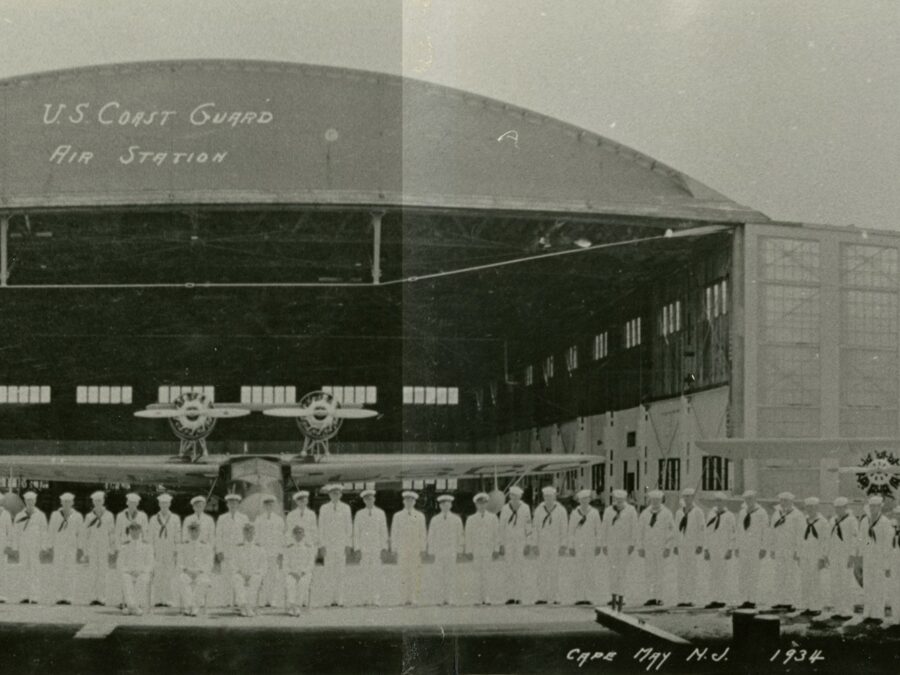
Charles T. Thrun joined the Coast Guard on May 5, 1916, at the age of 30. It’s hard to say if Thrun gave flying a thought when he joined the Coast Guard. At that time, the Coast Guard had no aircraft to call its own.
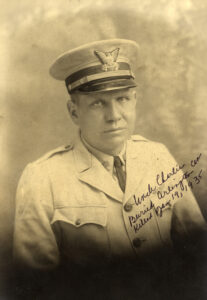
By luck or design, Thrun ended up being in the right place at the right time. For in March 1917, he was to be in the first class of Coast Guard aviators to graduate from the Naval Air Station Pensacola, Florida. The class was a mixture of six officers and 12 enlisted men. Chief Gunner’s Mate Charles Thrun became Coast Guard Aviator Number 3, and the first enlisted aviator in the Coast Guard.
By 1934 Thrun had had a full career. At one point, he was assigned to the USS Huntington while at the Naval Aeronautic Station, Pensacola, and probably participated in a series of early experiments using catapults to launch seaplanes from the deck of that ship. Thrun along with classmate, Aviator #1 Elmer Stone, worked out some of the problems associated with aircraft catapult launches. In 17 years of flying, he had never had a serious aircraft mishap and was beginning to make plans to retire with his family and was beginning to make plans to retire with his family.
Coast Guard accepts the new Grumman JF-2 “Duck”
In the fall of 1934, there was great excitement at Coast Guard Air Station Cape May, New Jersey. The new Grumman JF-2 “Duck” seaplanes had begun to arrive. Before long there would be eight of them at Cape May.
At the time, the Duck was a state-of-the-art amphibian aircraft. With a single 775 horsepower engine and a range of over 750 miles, it seemed to be perfect for the various Coast Guard aviation missions. By that December, Cmdr. Elmer Stone had even set a speed record of just over 191 mph in a Duck. While the Duck was a rugged aircraft, it wasn’t perfect. Landing in a crosswind could be challenging requiring practice and experience.
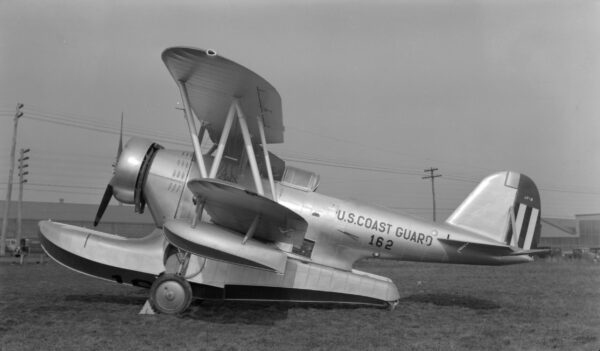
The Last Flight
Jan. 19, 1935, probably started out like any other Saturday. Stone had broken the speed record a month earlier and there were still more Duck records to be broken; plus, everyone wanted to fly in the new aircraft.
That afternoon, Thrun was practicing touch and goes in the waters off Base Nine Aviation Station (Cape May, New Jersey) in aircraft number No. 162–one of the new Ducks. Also onboard the plane was Machinist’s Mate Kermit Parker.
It was 3 p.m. and Thrun had already made three perfect landings. He was starting his run for his fourth take-off, when something happened. The wing pontoon caught on the water’s surface, pulling the wing into the water, and crumpling it, and flipping the plane over. As the Duck turned over on its back, Parker was thrown clear of the plane and into Cape May Bay. Parker swam back to the surface and was quickly plucked from the water by George Warner, who had witnessed the crash from his clamming boat. Parker dove back into the water to try to rescue Thrun who was still in the overturned aircraft.
From a hangar on the shore, the crash was witnessed by Lt. Richard Burke, commanding officer of the base. Burke had been preparing to conduct some practice flights of his own in another Duck and would set his own Duck speed records.
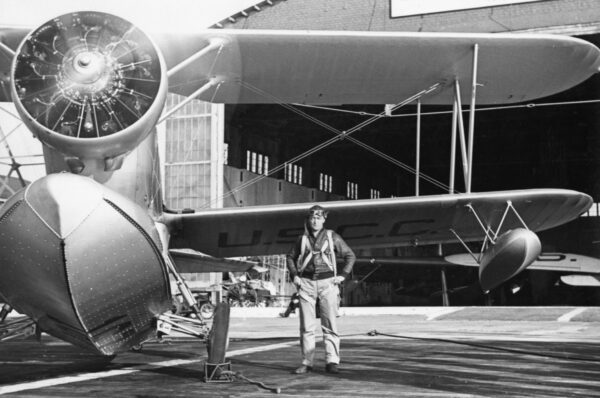
Burke and another witness, Lt. Edmund Fahey, ran to the station’s crash boat. As the boat sped to the crash site, the men tore off their uniforms. Within five minutes of the crash, the boat was on scene and several men were diving into the icy waters to release Thrun from the plane. At that point, Burke ordered Parker back aboard the boat for treatment of hypothermia and shock. Finally, one of the men was able to free Thrun from the wreckage. Thrun was then brought aboard the boat where resuscitation efforts began.
On shore, another witness, J.J. Spencer, Jr, drove to Cape May to get a lung motor from the fire department and take it back to the base along with a doctor. For over seven hours, Dr. Frank Hughes worked to save Thrun’s life. However, at 10:52 that evening, Thrun was pronounced dead. A man many in the Coast Guard aviation community lovingly referred to as “Daddy Thrun” and the Coast Guard’s third pilot, had become the service’s first aviator to be killed in a crash.
Badly twisted and damaged, the Duck was towed to the base and placed in a hangar.
Burial at Arlington
Thursday, Jan. 24, 1935, was a cold day at Arlington National Cemetery. At Charles Thrun’s funeral, a small group of family, including his wife, Mona, and 18-month-old daughter, friends and colleagues gathered to pay their last respects. Under a clear sky with full military honors and surrounded by pure white snow, Thrun was laid to rest in the hallowed grounds at Arlington.
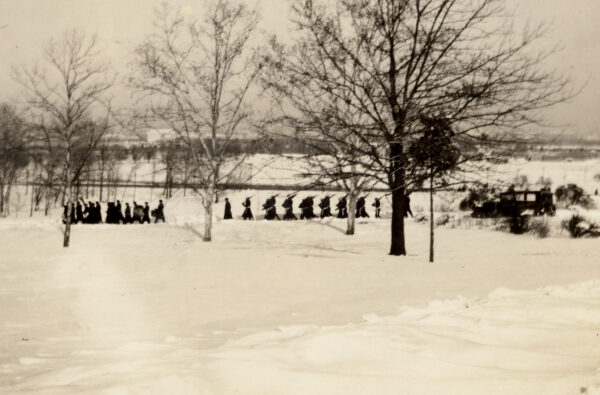
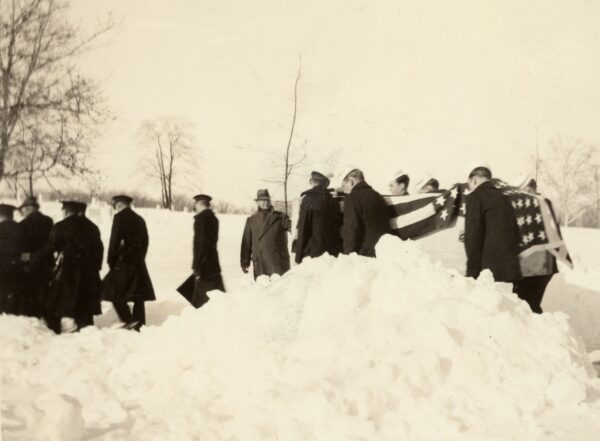
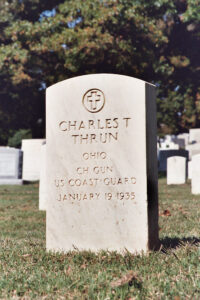
If you visit Arlington National Cemetery, you can find the stone marking Thrun’s grave in Section 6, Lot 8665, about midway between the Tomb of the Unknowns and the Coast Guard Memorial.
Also – while Thrun did not survive the crash, aircraft No. 162 did. It was repaired to fly again. In October 1936, it was renumbered V-136 and flew many more years with the Coast Guard.
National Coast Guard Museum insider tip: Visitors will be able to learn about the early history of Coast Guard aviation and the technical challenges that early aviators faced in the Aviation and Life Boat Timeline exhibit on Deck02 of the Museum.
